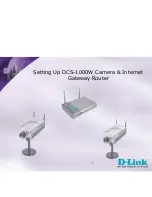
1044
Troubleshooting
Information for Troubleshooting
If the module is identified as a Cisco SFP module, but the system is unable to read vendor-data information to verify its
accuracy, an SFP module error message is generated. In this case, you should remove and reinsert the SFP module. If it
continues to fail, the SFP module might be defective.
Ping
The switch supports IP ping, which you can use to test connectivity to remote hosts. Ping sends an echo request packet
to an address and waits for a reply. Ping returns one of these responses:
Normal response—The normal response (
hostname
is alive) occurs in 1 to 10 seconds, depending on network traffic.
Destination does not respond—If the host does not respond, a
no-answer
message is returned.
Unknown host—If the host does not exist, an
unknown host
message is returned.
Destination unreachable—If the default gateway cannot reach the specified network, a
destination-unreachable
message is returned.
Network or host unreachable—If there is no entry in the route table for the host or network, a
network or host
unreachable
message is returned.
Layer 2 Traceroute
The Layer 2 traceroute feature allows the switch to identify the physical path that a packet takes from a source device to
a destination device. Layer 2 traceroute supports only unicast source and destination MAC addresses. It finds the path
by using the MAC address tables of the switches in the path. When the switch detects a device in the path that does not
support Layer 2 traceroute, the switch continues to send Layer 2 trace queries and lets them time out.
The switch can only identify the path from the source device to the destination device. It cannot identify the path that a
packet takes from source host to the source device or from the destination device to the destination host.
Layer 2 Traceroute Usage Guidelines
Cisco Discovery Protocol (CDP) must be enabled on all the devices in the network. For Layer 2 traceroute to function
properly, do not disable CDP.
If any devices in the physical path are transparent to CDP, the switch cannot identify the path through these devices.
For more information about enabling CDP, see
A switch is reachable from another switch when you can test connectivity by using the
ping
privileged EXEC
command. All switches in the physical path must be reachable from each other.
The maximum number of hops identified in the path is ten.
You can enter the
traceroute mac
or the
traceroute mac ip
privileged EXEC command on a switch that is not in the
physical path from the source device to the destination device. All switches in the path must be reachable from this
switch.
The
traceroute mac
command output shows the Layer 2 path only when the specified source and destination MAC
addresses belong to the same VLAN. If you specify source and destination MAC addresses that belong to different
VLANs, the Layer 2 path is not identified, and an error message appears.
If you specify a multicast source or destination MAC address, the path is not identified, and an error message
appears.
If the source or destination MAC address belongs to multiple VLANs, you must specify the VLAN to which both the
source and destination MAC addresses belong. If the VLAN is not specified, the path is not identified, and an error
message appears.
Summary of Contents for IE 4000
Page 12: ...8 Configuration Overview Default Settings After Initial Switch Configuration ...
Page 52: ...48 Configuring Interfaces Monitoring and Maintaining the Interfaces ...
Page 108: ...104 Configuring Switch Clusters Additional References ...
Page 128: ...124 Performing Switch Administration Additional References ...
Page 130: ...126 Configuring PTP ...
Page 140: ...136 Configuring CIP Additional References ...
Page 146: ...142 Configuring SDM Templates Configuration Examples for Configuring SDM Templates ...
Page 192: ...188 Configuring Switch Based Authentication Additional References ...
Page 244: ...240 Configuring IEEE 802 1x Port Based Authentication Additional References ...
Page 298: ...294 Configuring VLANs Additional References ...
Page 336: ...332 Configuring STP Additional References ...
Page 408: ...404 Configuring DHCP Additional References ...
Page 450: ...446 Configuring IGMP Snooping and MVR Additional References ...
Page 490: ...486 Configuring SPAN and RSPAN Additional References ...
Page 502: ...498 Configuring Layer 2 NAT ...
Page 770: ...766 Configuring IPv6 MLD Snooping Related Documents ...
Page 930: ...926 Configuring IP Unicast Routing Related Documents ...
Page 976: ...972 Configuring Cisco IOS IP SLAs Operations Additional References ...
Page 978: ...974 Dying Gasp ...
Page 990: ...986 Configuring Enhanced Object Tracking Monitoring Enhanced Object Tracking ...
Page 994: ...990 Configuring MODBUS TCP Displaying MODBUS TCP Information ...
Page 996: ...992 Ethernet CFM ...
Page 1066: ...1062 Using an SD Card SD Card Alarms ...
















































